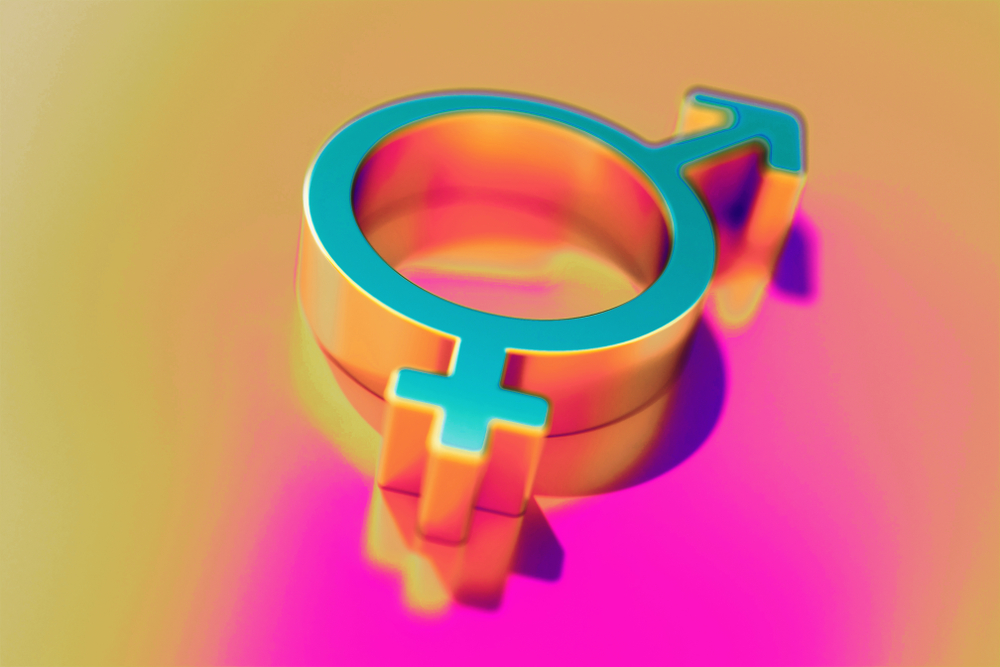
By now, you’re probably aware that there’s much more to astrology than what’s in newspaper and magazine horoscopes. If you know your sign, chances are you may have heard that it’s masculine or feminine. But what, if anything, do these labels mean for people who are non-binary, third-gender, agender, or otherwise don’t fit the typical Western gender binary? Is gender even relevant in modern astrology? These and other questions prompt many astrologers and enthusiasts to reexamine traditional notions of gender in astrology.
A Quick History of Gender in Astrology
Western astrology is roughly based on techniques and principles documented by Claudius Ptolemy, a Greek astrologer and mathematician. Ptolemy wrote Tetrabiblios, a four-book astrological treatise, in the second century CE. Later astrologers based their methods on this work, which is partially why we have a tropical zodiac year and 12 zodiac signs.
At some point, astrologers assigned genders and gendered traits to the various signs. This classical Western approach viewed Aries, Gemini, Leo, Libra, Sagittarius, and Aquarius as masculine signs and Taurus, Cancer, Virgo, Scorpio, Capricorn, and Pisces as feminine signs. These assignments were likely based on the elements with which each sign was aligned. As the Indiana Daily Student’s Kathryn de la Rosa points out, all the masculine signs are either fire or air and the feminine signs belong to the earth and water categories. Masculine signs are thought to be active and direct energy outward, while feminine signs are receptive and contain their energies.
Even celestial bodies didn’t escape being gendered. The sun, Mars, Jupiter, and Saturn became masculine planets, while the moon, Venus, Neptune, and Pluto were feminine planets. Mercury and Uranus were considered neutral.
Leo Men, Virgo Women, and Other Tropes
Writing for Refinery29, Erika W. Smith discusses astrology’s growing popularity among LGBTQ individuals. As they dig deeper into the subject, Smith adds, they may encounter gendered assumptions that often don’t include queer and transgender people. The gender binary applied to zodiac signs themselves is just one example. There’s also stuff like “your guide to the Gemini man” offering suggestions on how to win him over, except these write-ups presume the reader is a woman and that the man in question is heterosexual.
LGBTQ people can feel excluded by such language and ideas, especially non-binary and same-sex-loving individuals. Binary-identified transgender people can also find them constricting. Smith points out that cisgender and heterosexual people have problems with gendered generalizations in astrology. She also cites astrologer Jessica Lanyadoo, who asserts that the field has been largely shaped in the past by cisgender heterosexual white men.
In response, queer and transgender astrologers are adapting these concepts for better inclusivity. For instance, zodiac signs are described as possessing more outward-focused energies instead of being masculine. Some queer and trans people find gendered language useful: for example, a Leo trans man feeling affirmed by his sign’s traditional masculine designation. Rather than eliminating gender entirely, however, Lanyadoo says that LGBTQ astrologers are “queering” astrology: moving away from conventional notions and incorporating new realities into the practice.
We Are More Than Our Sun Signs
Others point out that astrology encompasses far more than sun signs, so gendered generalizations along with an extreme focus on sun signs can limit understanding and interpretation. A person’s natal chart contains many other elements: the ascendant, planetary positions, lunar nodes, asteroids, astrological houses, points, and axes. Logically, reducing a person down to an individual sun sign or gender proves to be very reductive.
Astrologer Erin Sullivan comments that natal charts alone don’t reveal a person’s gender or orientation. Rather, they’re meant to tell a broader story: an individual’s personality, needs, desires, strengths, and challenges. Just like the natal chart, astrology itself is expansive and offers the potential to adapt, grow, and encompass new realities and understanding.

